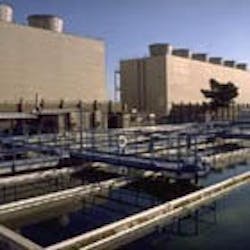Report Analyzes U.S. Water Recycling & Reuse Market
Frost & Sullivan has released a research report titled “U.S. Water Recycling and Reuse Systems Market,” providing the drivers, restraints, and market trends that are impacting this market. In the research, Frost & Sullivan's analysts examine the following technologies: activated carbon systems, media filtration systems and membrane systems.
Population Increase and Freshwater Demand Drive the Water Recycling and
Reuse Market
Water recycling and reuse is gaining popularity in the U.S. due to the growing demand for water in industries and municipal applications like agricultural irrigation, lawn watering and other nonpotable applications. Increase in population and the growing economy are further putting enormous strain on the existing freshwater resources. Water reuse and recycling, which help augment existing water resources to cope with the demand for freshwater, provides a solution for sustainable water management. There are several technologies currently available for treating wastewater for reuse or recycling. Membrane bioreactor (MBR) is a popular technology that is on a high growth path, as it combines activated sludge treatment with membrane filtration.
Stringent federal wastewater discharge regulations are also driving water recycling and reuse in the U.S. The absence of federal standards for water reuse has forced the states to establish their own standards. California and Florida are leading the nation in recycling and reusing water. Some of the other southern states such as Georgia, Texas, Arizona and Nevada also have water reuse programs. "The opportunities for water reuse are tremendous and the states are realizing its potential benefits," noted a Frost & Sullivan analyst. "The rising cost of water, which is a direct effect of the current water shortage, coupled with tighter environmental regulations, offers good market opportunities for existing and emerging participants."
Consumers' Negative Perception of Wastewater Reuse Must Be Alleviated
By Heightening Awareness
Although wastewater is being treated to a level that is fit for drinking, consumers do not have a complete understanding of treatment techniques for reusing wastewater, and find these “toilet to tap” projects unacceptable. "Whether the water is used for edible food crops, aquifer recharge or purposes such as toilet flushing or gardening, issues such as colour and turbidity of water and health concerns are giving them reasons to doubt the safety and usability of treated wastewater," the analyst observed. "Hence, there is a strong negative perception on using treated wastewater for domestic applications such as lawn irrigation, car washing or indirect potable reuse among the consumers."
State water authorities and manufacturers feel that educating the end users by highlighting the benefits of reusing water would help change this perception. They prefer addressing public health concerns and other issues through organizations such as the Water Environment Federation, which have a much broader access and can disseminate information quickly.
For more information please visit: www.researchandmarkets.com/product/a26071/ u_s_water_recycling_and_reuse_systems_market.
Source: Frost & Sullivan, Research and Markets, Ltd.
